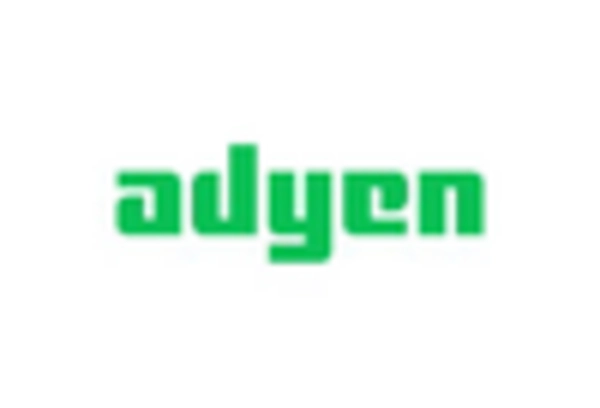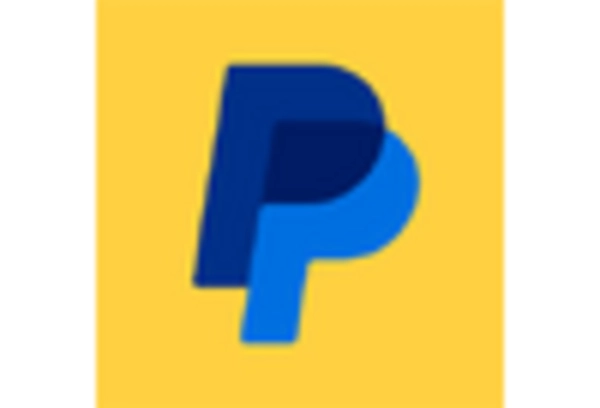Growing E-commerce Sector
The rapid expansion of the e-commerce sector is significantly impacting the pay card-reader market. With online sales projected to reach $1 trillion in the US by 2025, businesses are increasingly investing in card-reader solutions that facilitate seamless online transactions. This trend is particularly evident among small to medium-sized enterprises that seek to enhance their digital payment capabilities. The integration of pay card-readers with e-commerce platforms allows for a more streamlined checkout process, which is essential for capturing consumer interest. Consequently, the pay card-reader market is likely to benefit from this growth, as more businesses recognize the need for efficient payment solutions.
Rise of Small Business Adoption
The pay card-reader market is witnessing a rise in adoption among small businesses, which is a crucial driver of growth. As more small enterprises recognize the importance of accepting card payments, the demand for affordable and efficient pay card-reader solutions is increasing. In 2025, it is projected that small businesses will account for nearly 40% of all card transactions in the US. This trend is fueled by the availability of cost-effective mobile card readers and the growing emphasis on customer convenience. As small businesses continue to embrace digital payment methods, the pay card-reader market is likely to expand, reflecting the changing dynamics of consumer spending.
Consumer Preference for Digital Transactions
There is a notable shift in consumer behavior towards digital transactions, which is reshaping the pay card-reader market. Surveys indicate that approximately 70% of consumers prefer using card payments over cash, reflecting a broader trend towards cashless societies. This preference is driven by the convenience and speed of digital payments, which are increasingly seen as essential in everyday transactions. As consumers continue to favor card payments, businesses are compelled to adopt advanced pay card-reader technologies to meet these expectations. This evolving consumer landscape suggests a robust growth trajectory for the pay card-reader market as it adapts to changing preferences.
Regulatory Support for Digital Payment Solutions
Regulatory frameworks in the US are increasingly supportive of digital payment solutions, which is beneficial for the pay card-reader market. Initiatives aimed at promoting secure and efficient payment systems are being implemented, encouraging businesses to adopt modern payment technologies. For instance, the Federal Reserve has been actively working on enhancing payment system infrastructure, which is expected to facilitate faster transactions and improve security measures. This regulatory support not only fosters innovation but also instills confidence among consumers and businesses alike, potentially leading to increased adoption of pay card-readers across various sectors.
Technological Advancements in Payment Processing
The pay card-reader market is experiencing a surge in technological advancements that enhance payment processing efficiency. Innovations such as Near Field Communication (NFC) and EMV chip technology are becoming standard, allowing for faster and more secure transactions. In 2025, it is estimated that NFC-enabled devices will account for over 50% of all card transactions in the US. This shift not only improves customer experience but also reduces the risk of fraud, which is a critical concern in the pay card-reader market. As businesses adopt these technologies, they are likely to see increased customer satisfaction and loyalty, further driving growth in the industry.
















Leave a Comment